Newfoundland: A Place for Walking
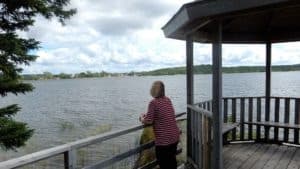 Newfoundland is amazing. You would expect an important site like Gros Morne to have a lot of good walking trails. What you might not expect is that many of the towns and even the very small villages with populations of maybe 300 people also have excellent walking trails. These trails are well laid out. When they go through swampy areas or really steep sections there is usually a boardwalk or stairs. The paths range from a quick 15 minute walk to hikes longer than15 km and that doesn’t include the multi-day trails. Over 90% of the photos on this website were taken on our walks. This province of Newfoundland and Labrador has more than 29,000 km or 18,000 miles of coastline of which about 10,000 km is in Newfoundland itself. Given the lack of interior roads and the fishing heritage you are rarely far from the sea in your travels. Sometimes you wonder if all the photographs start to look the same to other people – just more gorgeous hills, trees, rocks and water. Newfoundland is actually one of the largest islands in the world coming in at number 16.
Newfoundland is amazing. You would expect an important site like Gros Morne to have a lot of good walking trails. What you might not expect is that many of the towns and even the very small villages with populations of maybe 300 people also have excellent walking trails. These trails are well laid out. When they go through swampy areas or really steep sections there is usually a boardwalk or stairs. The paths range from a quick 15 minute walk to hikes longer than15 km and that doesn’t include the multi-day trails. Over 90% of the photos on this website were taken on our walks. This province of Newfoundland and Labrador has more than 29,000 km or 18,000 miles of coastline of which about 10,000 km is in Newfoundland itself. Given the lack of interior roads and the fishing heritage you are rarely far from the sea in your travels. Sometimes you wonder if all the photographs start to look the same to other people – just more gorgeous hills, trees, rocks and water. Newfoundland is actually one of the largest islands in the world coming in at number 16.
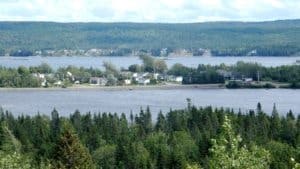 Mike is much more observant than I am when we are walking (or doing anything else for that matter). If it is words on a sign on the trail or on the road I will probably be the one to take it in but anything else Mike is the one to notice. We have seen a few moose on our travels. Of course Mike spotted them first and pointed them out to me. Moose are not native to Newfoundland. In 1878 one pair was introduced from Nova Scotia. The belief is that this pair died. In 1904 four moose where brought over from New Brunswick. Today the approximately 150,000 moose on the island are all believed to have descended from these four. They were originally introduced for two reasons. One was to attract big game hunters as a market for Newfoundland’s new railways (which have since been closed) opening up the interior of the province. The second reason was for food for the miners and forestry workers. Mike and I have often eaten moose on this trip both in restaurants and in our camper. It has a very nice taste. The moose burgers that we ate were better than hamburgers but that might have just been that restaurant’s touch. An interesting piece of trivia is that the ungainly looking moose is actually the world’s largest living deer.
Mike is much more observant than I am when we are walking (or doing anything else for that matter). If it is words on a sign on the trail or on the road I will probably be the one to take it in but anything else Mike is the one to notice. We have seen a few moose on our travels. Of course Mike spotted them first and pointed them out to me. Moose are not native to Newfoundland. In 1878 one pair was introduced from Nova Scotia. The belief is that this pair died. In 1904 four moose where brought over from New Brunswick. Today the approximately 150,000 moose on the island are all believed to have descended from these four. They were originally introduced for two reasons. One was to attract big game hunters as a market for Newfoundland’s new railways (which have since been closed) opening up the interior of the province. The second reason was for food for the miners and forestry workers. Mike and I have often eaten moose on this trip both in restaurants and in our camper. It has a very nice taste. The moose burgers that we ate were better than hamburgers but that might have just been that restaurant’s touch. An interesting piece of trivia is that the ungainly looking moose is actually the world’s largest living deer.
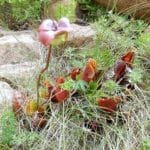
The other thing that we, usually Mike first, have seen on our walks are the different flora local to the area. There are 44 species of orchids native to Newfoundland. The plant that I like the most is the Pitcher Plant which looks just like its name. Look at the leaves in the shape of a pitcher. This is the official flower of the province.
One of the things that you see a lot while walking or driving through the towns are flags. All sorts of houses fly both the Canadian and the provincial flag. In Labrador and along the Northern peninsula you often saw a third flag and that is the flag of the mainland or Labrador. When Newfoundland and Labrador joined confederation their provincial flag was the Union Jack. As part of the 25th anniversary of confederation Labrador designed its own flag. Five years later in 1980 the Union Jack was replaced with a new provincial flag.
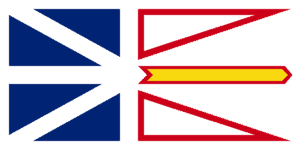
If you look closely you will see that it is impossible to fly the flag of Newfoundland and Labrador upside down. The symbolism behind the flag is interesting. In the flag blue represents the sea, white the snow and ice of winter and the red represents the effort and struggle of the people. The gold symbolizes their confidence in themselves and the future. The blue triangles are a tribute to the Union Jack. The two red triangles represent the two portions of the province – the mainland and the island. The gold arrow points towards a brighter future. The arrow becomes a sword when the flag is draped as a vertical banner. The red triangles and the gold arrow form a trident symbolizing the province’s fisheries and the resources of the sea. A lot of symbolism in one small flag.
.

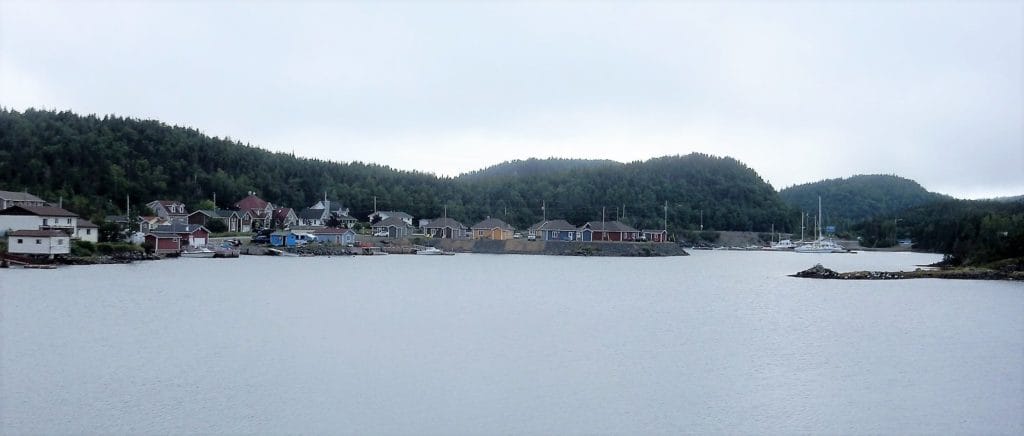
Leave a Reply